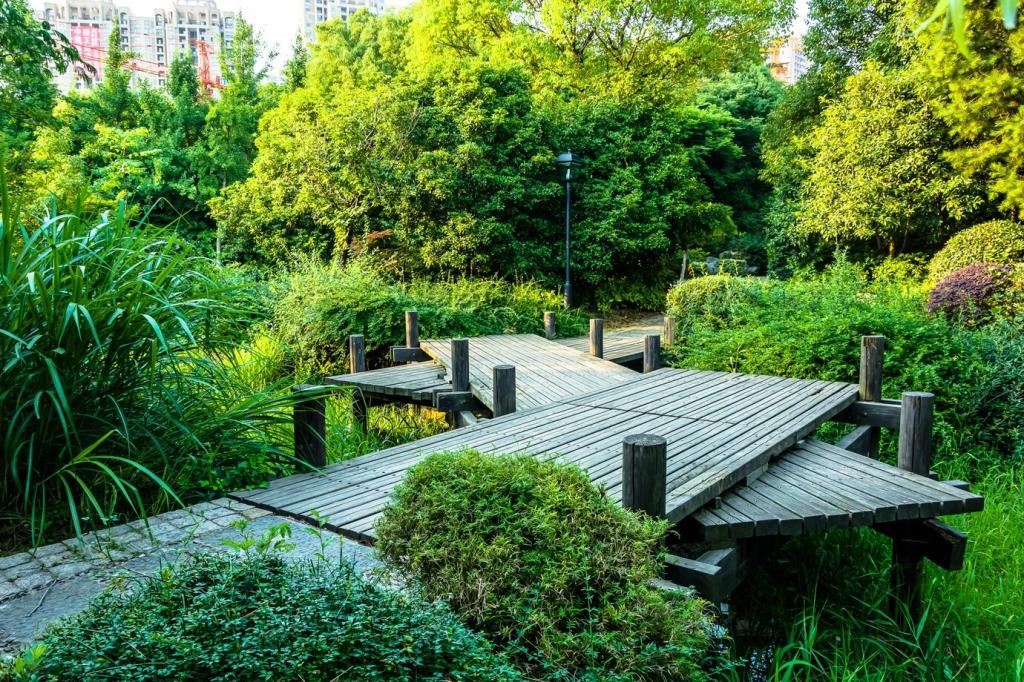Climate Resilience and Future-Proofing
Use windbreaks, reflective-heat buffers, and overflow routes for big storms. On a coastal lot, we spaced salt-tolerant shrubs in staggered rows and built a dry well. After a hurricane remnant, the yard drained overnight and plant stress remained minimal.
Climate Resilience and Future-Proofing
Create defensible space with lean, clean, and green zones near structures. Choose high-moisture, low-resin plants, maintain clear eaves, and avoid ladder fuels. Clients in a fire-prone canyon kept embers at bay with gravel rings and well-watered native groundcovers.






